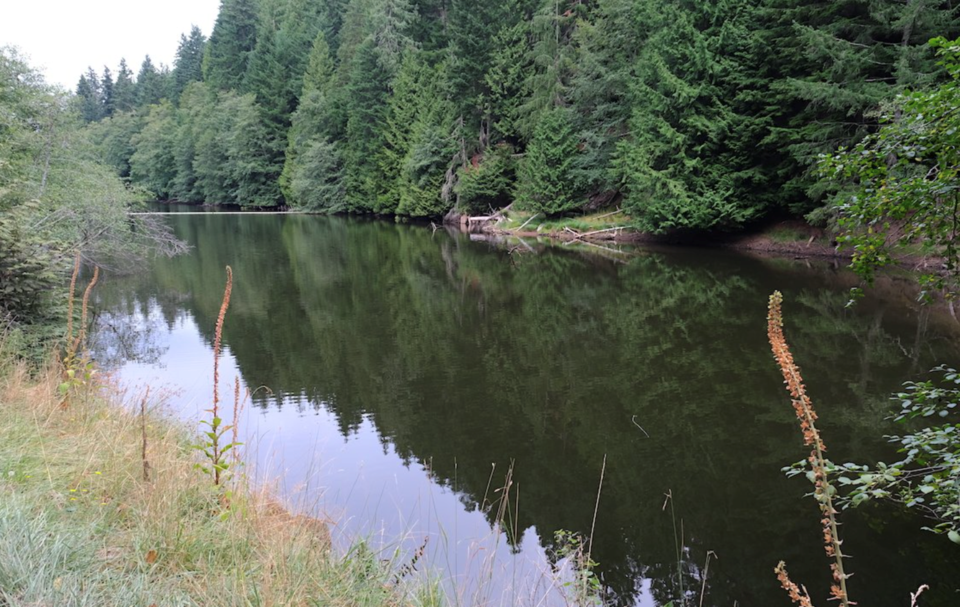A new land conservancy on Saturna Island has created a significant green corridor that includes B.C.’s rarest climatic zone.
The Nature Trust of B.C. has purchased 143.5 acres for the Money Creek conservation area on the southwest corner of Saturna, which falls in the moist maritime Coastal Douglas Fir (CDF) bioclimatic subzone, part of the smallest and rarest of the province’s 16 ecological zones
The new land trust now connects to the Southern Gulf Islands National Park Reserve and other protected areas, resulting in a preserved area that now spans the length of the island, said Lee Middleton, Saturna Island trustee with Islands Trust.
“It’s a beautiful acquisition by the Nature Trust,” Middleton said.
“It creates almost an entirely preserved backbone on the island, which is hugely important from the perspective of watershed and forest health.”
The CDF only covers 0.3 per cent of the province in low elevations on limited sections of the mainland coast, on the Gulf Islands and along the southeastern coast of Vancouver Island.
The bioclimatic zone is poorly protected and largely fragmented because it falls in a heavily developed and populated area of the province, said Jasper Lament, CEO of the Nature Trust of B.C.
“It is an area of conservation concern, and the Nature Trust of B.C. is always on the lookout for opportunities to conserve good chunks of CDF, and this is certainly one of them,” Lament said.
“And it's nice to acquire one that is so large, almost 50 hectares, and that is also contiguous with lands that have been protected by other conservation agencies.”
The protected area has an almost Mediterranean-like climate and includes a mountain slope leading up to Mount Warburton Pike, which has astounding views, Middleton said.
Now, a trail can be established so people can traverse the length of the island and appreciate both mature and young forests, mixed woodlands, riparian areas and pocket wetlands that are crucial for at-risk species in the new conservation area, he said.
“This is a way for our community (to be involved) in doing some meaningful conservation and to allow others to enjoy a very special part of the world.”
The new conservation area is home to animals such as the barn swallow and northern red-legged frog, which are listed under Canada’s Species at Risk Act (SARA), according to the Nature Trust.
The swallows with their forked tails, rusty-orange chest and belly and shiny blue backs migrate to the Gulf Islands from Central and South America to nest and catch insects.
While the swallows hollow out nests in the sandy or muddy bluffs on the island, they’ve adapted over time to build nests under human-made structures, such as the eaves of houses or barns.
“Barn swallows have really been in decline across North America, so it's important to try to protect habitat for them wherever they occur,” Lament said.
The northern red-legged frog, which has been spotted at Money Lake near the new conservation area, is named for the translucent red undersides of its hind legs.
The brownish-black speckled frog ranges up to 10 centimetres in size and frequents wetlands at constant threat of being drained or altered by development or forestry activity.
“The (Money Creek area) provides that kind of micro-diversity of habitat for different species, which makes the property important,” Lament said.
The Saturna Island land was bought by the trust from the Money family, which acquired it in 1945.
Funds raised from donors in memory of trust supporters Patrick and Hilary Oswald make the land purchase possible, Lament said.
As did the generosity of the Money family, which sold the land well below market value to support the conservation project and compound the ecological value of their past land donations on the island, Lament said.
“I hope that there will be other people coming after me who will enjoy rambles over these lands as much as I have throughout my life, and the restorative energy from being in the woods that these walks give you,” said John Money.
Money and his brother would ramble around Saturna for days at a time, exploring every nook and cranny of the island they loved so well, he said.
“I felt that the Nature Trust of British Columbia was the best way to enshrine these lands and keep the trails maintained for future generations to walk through and enjoy.”



